Today’s Current Affairs: 22nd June 2024 for UPSC IAS exams, State PSC exams, SSC CGL, State SSC, RRB, Railways, Banking Exam & IBPS, etc
Table of Contents
Chenab Rail Bridge : Successful Trial Run

The Indian Railway conducted a successful trial run on the newly-constructed world’s highest railway bridge, Chenab Rail Bridge, in Jammu and Kashmir.
- Chenab Rail Bridge is located between Bakkal and Kauri in the Reasi district of Jammu and Kashmir (J&K).
- The 1.3-km-long bridge is located 359 metres above the Chenab riverbed.
- It is the highest single-arch railway bridge in the world.
- It is part of the Udhampur-Srinagar-Baramulla Rail Link project.
- The construction of the Chenab bridge has been a collaborative effort, involving various international organizations and renowned Indian institutions, including the Indian Institutes of Technology (IITs), the Defence Research and Development Organisation (DRDO), and the Geological Survey of India.
- It consists of 17 spans, with the main arch spanning an impressive 467 metres, making it the longest of its kind.
- The arch consists of steel boxes. Concrete has been filled in the boxes to improve stability.
- The bridge consists of 93 deck segments, each weighing approximately 85 tonnes.
Trinity Challenge:

A project by the Indraprastha Institute of Information Technology, Delhi (IIIT-Delhi), has won the joint second prize in Trinity Challenge’s second competition, on tackling the escalating threat of antimicrobial resistance (AMR).
- The Trinity Challenge (TTC) is a charity supporting the creation of data-driven solutions to help protect against global health threats.
- It is a partnership of over 40 leading global organizations across the private, public, and social sectors.
- TC partners are united by the common aim of using data and advanced analytics to create inclusive innovations and build a world that’s better prepared for health emergencies.
- To that purpose, TTC is launching, supporting, and funding public challenges.
- It was launched in response to the Covid-19 pandemic, which highlighted a global need to be better prepared to tackle healthcare emergencies.
- The initial Challenge asked teams to deliver data-driven solutions to predict, respond to and recover from pandemics.
- It awarded £5.7 million to teams that developed innovative tools and approaches for better pandemic preparedness and response.
- Following the success of the first Trinity Challenge, the second Challenge – The Trinity Challenge on Antimicrobial Resistance (AMR), issues a call to the world’s best and brightest minds for data-driven solutions that will protect the power of antibiotics.
Pro-tem Speaker:

The President has appointed Bhartruhari Mahtab, a seven-term MP from Cuttack, as the pro tem Speaker of the 18th Lok Sabha.
- Pro-tem Speaker is a Latin phrase which translates to ‘for the time being’ in English, and so the pro-tem speaker is a temporary speaker appointed for a limited period of time to conduct the work in Lok Sabha or in state legislatures.
- A Pro-tem speaker is chosen for the conduct of the house when the Lok Sabha and legislative assemblies have been elected and the vote for the speaker and deputy speaker has not taken place.
- The Constitution does not expressly use the term ‘Pro-tem Speaker’.
- The office of the pro tem speaker ceases to exist after the new Speaker of the House is chosen.
- The Speaker Pro-tem is appointed by the President of India/Governor.
- The President/Governor administers the oath of office to the pro-tem Speaker.
- As per convention, a senior most member will be appointed as the pro tem speaker with the agreement of assembly members, who then carry on the activities until the permanent speaker is chosen.
Capsaicin : Acute Poisoning
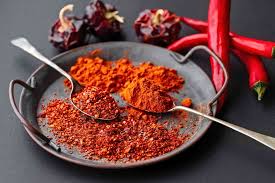
Food safety authorities in Denmark have recalled three types of South Korean spicy instant noodles over possible risks of “acute poisoning” due to high Capsaicin levels.
- Capsaicin is a naturally-occurring botanical irritant in chili peppers, synthetically derived for pharmaceutical formulations.
- It is most abundantly found in the “placenta” (white membrane to which seeds are attached) of some chili peppers fruits of plants of genus Capsicum.
- The chemical binds to TRPV1 receptors in humans’ nose, mouth, skin, and insides.
- These receptors help in detecting heat (and pain), and are most commonly activated by a rise in temperature.
- But capsaicin ‘tricks’ them into reacting, even though there is no actual temperature rise.
- The brain, thus, believes that the body is on fire, causing the painful, burning sensation associated with consuming chilis.
- The body then tries to cool down hence the sweating, and the red face (capillaries just below the skin dilate, as blood rushes to the surface of the body, where it can radiate heat away more easily).
- The runny nose or teary eyes are the body’s attempt at expelling the heat-causing element. So are the gut cramps and diarrhea.
- It is most often used as a topical analgesic and exists in many formulations of cream, liquid, and patch preparations of various strengths
Container Port Performance Index (CPPI) 2023:
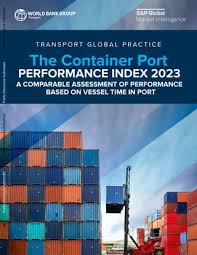
India’s port development program received a major boost as 9 ports from India were included in the Global Top 100 for the first time in the Container Port Performance Index (CPPI), 2023.
- The credit for this achievement has been given to the Sagarmala programme which has focused on the modernisation of the ports and improving their efficiency.
Key Highlights of the CPPI 2023:
- It is a global index developed by the World Bank and S&P Global Market Intelligence. It measures and compares the performance of container ports around the world.
- The index ranks 405 global container ports by efficiency, focusing on the duration of port stay for container vessels.
- Its primary aim is to identify areas for enhancement for the benefit of multiple stakeholders in the global trading system and supply chains, from ports to shipping lines, national governments, and consumers.
- In the CPPI 2023 rankings, Yangshan Port in China is first, followed by the Port of Salalah in Oman. The Port of Cartagena is third, and Tangier-Mediterranean is fourth.
- Visakhapatnam Port jumped from 115 in 2022 to 19 in the 2023 rankings, becoming the first Indian port to reach the Global Top 20.
- Mundra Port also improved its position, rising from 48 last year to 27 in the current ranking.
- Seven other Indian ports, which secured ranks in the top 100, are Pipavav (41), Kamarajar (47), Cochin (63), Hazira (68), Krishnapatnam (71), Chennai (80) and Jawaharlal Nehru (96).
Hooch : Spurious Liquor Of Tamil Nadu’s
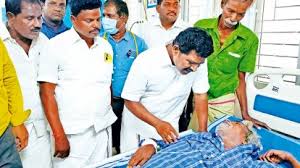
At least 34 people have died, and around 100 others have been hospitalised after consuming hooch, or spurious liquor, in Tamil Nadu’s Kallakurichi.
- Hooch is a commonly used term for poor quality alcohol, derived from Hoochinoo, a native Alaskan tribe that was known to produce very strong liquor.
- Unlike branded liquor which is produced in factories with sophisticated equipment and rigorous quality control, hooch is made in much more crude settings.
- All alcohol is produced using two basic processes: fermentation and distillation.
- When heated, yeast reacts with sugar (from grain, fruits, sugarcane, etc.) to ferment and produce a mixture containing alcohol.
- This is an age-old process, used to create beverages like beer or wine.
- As fermentation continues, and alcohol levels rise, conditions in the mixture become toxic for the yeast.
- Eventually, no more fermentation can take place. Thus, to make anything stronger (above 14-18% ABC), beverages need to be distilled.
- This is the process of physically separating alcohol from a fermented mixture using evaporation and condensation.
- Since different parts of the mixture have different boiling points, heating it up to the correct temperature makes it possible to separate only the alcohol from the water and other remnants.
- Distilled beverages, or spirits, are far more potent than any fermented beverage.
- The fermented mixture which is distilled contains more than just consumable alcohol (ethanol).
- It also contains methanol, an industrial alcohol which is highly toxic for human beings.
- Non-distilled alcoholic beverages like wine contain relatively harmless trace amounts of methanol.
- But during the distillation, both ethanol and methanol are concentrated.
- Thus, if done incorrectly, distillation can lead to an end product which contains high quantities of toxic methanol.
Human African Trypanosomiasis:
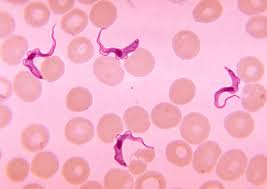
In a landmark achievement, Chad has become the first country in 2024 and the 51st globally to eliminate a neglected tropical disease (NTD) — the gambiense form of human African trypanosomiasis (HAT).
- Human African Trypanosomiasis (HAT) is also known as sleeping sickness.
- It is caused by protozoan parasites transmitted by infected tsetse flies and endemic in sub-Saharan Africa.
- It takes 2 forms, depending on the subspecies of the infecting parasite:
- Trypanosoma brucei gambiense is found in 24 countries of west and central Africa, currently accounts for 92% of reported cases and causes a chronic illness.
- A person can be infected for months or even years without major signs or symptoms. When evident symptoms emerge, often the disease is advanced with the central nervous system already affected.
- Trypanosoma brucei rhodesiense is found in 13 countries of eastern and southern Africa, accounts for 8% of reported cases and causes an acute disease.
- First signs and symptoms emerge a few weeks or months after infection.
- The disease develops rapidly with multi-organ invasion, including the brain.
- Tsetse flies inhabit sub-Saharan Africa and only certain species transmit the disease.
- Rural populations which depend on agriculture, fishing, animal husbandry or hunting are the most exposed.
- To date, WHO has validated the elimination of the gambiense form of HAT in seven countries: Togo (2020), Benin (2021), Ivory Coast (2021), Uganda (2022), Equatorial Guinea (2022), Ghana (2023) and Chad (2024).
SIPRI Report:
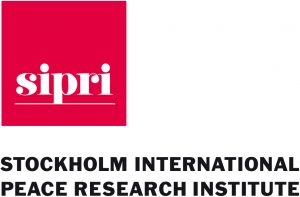
A Stockholm International Peace Research Institute (SIPRI) report was released that highlighted the increased risk and instability associated with the ongoing modernisation and expansion of nuclear arsenals worldwide.
Key Highlights of the Report:
- All nine nuclear-armed states (USA, Russia, UK, France, China, India, Pakistan, North Korea, and Israel) continued to modernise their nuclear arsenals.
- The total global inventory of nuclear warheads was approximately 12,121 as of January 2024, with about 9,585 in military stockpiles.
- Around 2,100 warheads were kept on high operational alert, primarily by Russia and the USA, but for the first time, China may have some warheads on high alert.
- Russia and USA together hold almost 90% of all nuclear weapons.
- China has significantly increased its nuclear arsenal from 410 to 500 by January 2024 and is expanding its nuclear arsenal faster than any other country.
- North Korea has approximately 50 warheads and materials for up to 90.
- Israel is modernising its arsenal and enhancing plutonium production capabilities (though not officially acknowledged).
- India now has 172 nuclear warheads as of January 2024, ranking 6th globally, ahead of Pakistan (170), and is emphasising longer-range weapons aimed at China.
- Nuclear arms control and disarmament diplomacy faced setbacks, particularly due to the war in Ukraine and Gaza.
- Tensions between Iran and the USA fluctuated and the Israel-Hamas war complicating diplomatic efforts.
- Significant setbacks included Russia’s suspension from the New START treaty and withdrawal from the Comprehensive Nuclear-Test-Ban Treaty (CTBT) ratification.
- It also highlighted issues like military expenditure, arms transfers, and the role of private military companies in conflicts.
- It also highlighted the risks related to artificial intelligence, outer space, cyberspace, and the protection of civilians in war zones.
SIPRI:
- It is an independent international institute dedicated to research into conflict, armaments, arms control and disarmament.
- It was established in 1966 in Stockholm (Sweden).
Bonn Climate Conference 2024:
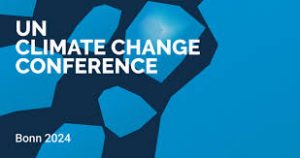
The recent climate meeting in Bonn, Germany, did not achieve significant progress in defining a new climate finance goal.
- Countries have yet to make concrete advancements on issues concerning the funding required to address the climate crisis.
- Climate Financing refers to large-scale investments required for actions to mitigate or adapt to climate change.
- Mitigation involves reducing greenhouse gas emissions, such as increasing renewable energy and expanding forest cover.
- Adaptation involves taking action to prevent or minimise the damage from adverse effects of climate change, such as building infrastructure to protect coastal communities from sea-level rise.
- The 1992 United Nations Framework Convention on Climate Change (UNFCCC) mandated high-income countries to provide climate finance to the developing world.
- As per Copenhagen Commitment, 2009, developed countries agreed to provide USD 100 billion per year to developing countries by 2020.
- The Green Climate Fund was established in 2010 as a key mechanism to deliver climate finance.
- The Paris Agreement in 2015 reinforced the USD 100 billion target and extended it to 2025
Summer Solstice 2024:

21st June has been marked as the day of the summer solstice in the northern hemisphere of the world.
- The summer solstice is celebrated as the beginning of summer, or midsummer when one of Earth’s poles is at its maximum tilt towards the sun.
- The summer solstice marks the longest day of the year, when the sun reaches its highest point in the sky.
- During the solstice, the Earth’s axis (around which the planet spins, completing one turn each day) is tilted in a way that the North Pole is tipped towards the sun and the South Pole is away from it.
- Typically, this imaginary axis passes right through the middle of the Earth from top to bottom and is always tilted at 23.5 degrees with respect to the sun.
- At the Arctic Circle(66°33′ north latitude), the sun never sets during the solstice.
- The amount of light received by a specific area in the Northern Hemisphere during the summer solstice depends on the latitudinal location of the place.
New Freshwater Diatom Genus Discovered:

Researchers have discovered a new genus of the Gomphonemoid diatom found in the clean water river of the Eastern Ghats and it has been named Indiconema to value its restricted distribution in the country.
- Indiconema differs in having a pore field at both the head and foot pole rather than having only at the foot pole.
- Researchers reported one species of Indiconema from the Eastern Ghats and another from the Western Ghats.
- A similar pattern of sharing endemic elements between two mountain systems has been observed for other endemic-rich groups, such as reptiles.
- Diatoms are photosynthetic, single celled organisms.
- These are microscopic algae and serve as a base of the aquatic food chain.
- Due to their sensitivity towards any water chemistry changes, they are excellent indicators of aquatic health.
- They are a major group of algae and form one of the most common forms of phytoplankton.
- They are found in almost every aquatic environmentincluding fresh and marine waters.
- Diatoms have cell walls made of silica, Each species has a distinct pattern of tiny holes in the cell wall (frustule) through which they absorb nutrients and get rid of waste.
- Collectively, they are responsible for generating up to 50% of the oxygen produced globally each year.
Pigment Purpurogallin:

A team of scientists from the UK and Canada traced the evolution of purple glacier algae, revealing their significant impact on glaciers and challenging traditional evolutionary theories.
- These algae, which thrive in extreme glacier environments, have evolved to produce a purple pigment, purpurogallin, that protects them from UV and visible light, aiding in their survival.
- The study shows that these adaptations likely emerged 520-455 million years ago, rather than during the Snowball Earth period as previously thought.
- This suggests a more recent glacial period drove their evolution.
- The algae’s ability to simplify rather than increase in complexity contradicts the traditional “march of progress” hypothesis in evolution.
- These adaptations have enabled glacier algae to persist and significantly affect glacier melt, highlighting their role in fragile ecosystems and the importance of understanding their evolution in the context of climate change.
KAVACH : In News

The accident involving the Sealdah Kanchanjunga Express on June 17, which claimed 10 lives, has brought to the fore once again the delay in installing Kavach, an indigenously developed automatic train protection (ATP) system, across the country’s rail network.
- Experts, including former Railway Minister and West Bengal Chief Minister Mamata Banerjee, raised questions about the delay in the implementation of the system.
- The KAVACH is an indigenously developed Automatic Train Protection (ATP) system by the Research Design and Standards Organisation (RDSO) in collaboration with the Indian industry.
- It is a state-of-the-art electronic system with Safety Integrity Level-4 (SIL-4) standards.
- It is meant to provide protection by preventing trains to pass the signal at Red (which marks danger) and avoid collision.
- It activates the train’s braking system automatically if the driver fails to control the train as per speed restrictions.
- In addition, it prevents the collision between two locomotives equipped with functional Kavach systems.
- The system also relays SoS messages during emergency situations. An added feature is the centralised live monitoring of train movements through the Network Monitor System.
- ‘Kavach’ is one of the cheapest, SIL-4 certified technologies where the probability of error is 1 in 10,000 years.
- The Traffic collision avoidance system (TCAS), with the help of equipment on board the locomotive and transmission towers at stations connected with Radio Frequency Identification (RFID) tags, helps in two-way communication between the station master and loco-pilot to convey any emergency message.
- The instrument panel inside the cabin helps the loco-pilot know about the signal in advance without visual sighting, and the permissible speeds to be maintained.
- If a red signal is jumped and two trains come face to face on the same line, the technology automatically takes over and applies sudden brakes.
10th International Day Of Yoga In Srinagar:

Prime Minister Narendra Modi participated in the 10th International Day of Yoga in Srinagar.
- PM Modi emphasised the global journey of Yoga, mentioning that in India, the AYUSH department has established the Yoga Certification Board for yoga practitioners.
- The term “Yoga” originates from the Sanskrit word “yuj,” which means to join or unite.
- Yoga aims to harmonize the mind, body, and soul, fostering a connection between individual consciousness and universal consciousness.
- The International Day of Yoga (IDY) is observed annually on June 21st.
- India proposed the idea of IDY during the opening of the 69th session of the United Nations General Assembly (UNGA) in 2014.
- The UN officially declared June 21st as IDY by passing a resolution in December 2014.
- The theme for International Yoga Day 2024 is “Yoga for Self and Society”.
- This theme emphasizes the dual benefits of yoga practice: enhancing personal well-being and contributing to the betterment of society.




